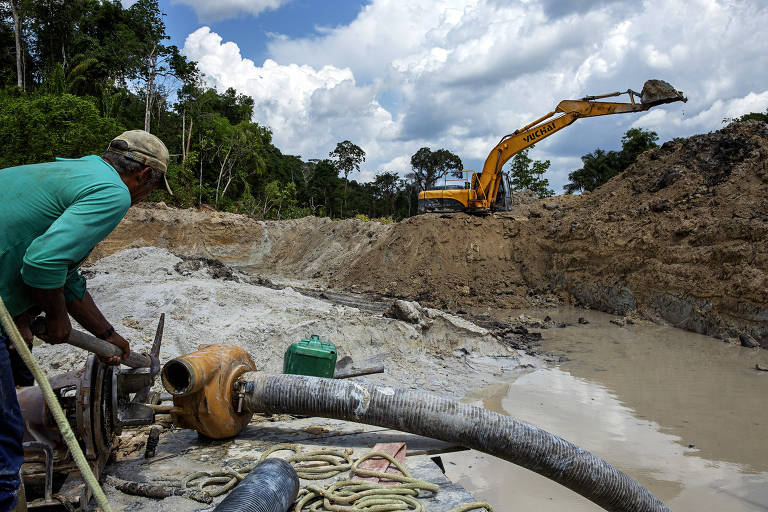Luis Pinheiro, 69, has been looking for gold for the last 50 years in the Tapajós river basin. He is one cog in the machine that has been maintaining for decades the town of Itaituba, population 101,000, in western Pará.
Used to spend months without setting foot in the town, he goes directly to the point: "Everybody in Brazil in a gold prospector."
Gold mining has been part of the region's economy since the 1950s, but the activity suffered a revolution lately, with the introduction of hydraulic backhoes, machines with a destruction power several times larger than previous methods.
"After illegal logging, gold prospecting is the biggest cause of the destruction of the Amazon rainforest. It's a environmental, social and moral destruction. It's organized crime taking possession of Brazilian riches," says Luciano Evaristo, director of environmental protection at Ibama, Brazil's environmental government agency.
The damage is happening especially in the tributaries of Tapajós river, one of the better-known sceneries in the Amazon, because of Alter do Chão's white sand beaches and blue water, which attract thousands of tourists every year.
Hundreds of kilometers upriver, however, it's a wasteland. All along smaller rivers like Rato, Crepori and das Tropas, hundreds of hydraulic backhoes dig deep holes along the margins. They rip out the riparian forest, dump tons of dirt in the riverbed and manage to alter the watercourses.
An analysis made in February by Ufopa (Federal University of Western pará) shows that in its mouth, Rato river transports 49.6 milligrams/liter (mg/l) of solid particles suspended in the water. After receiving Rato's muddy waters, Tapajós average increases from 25 mg/l to 27,8 mg/l, contributing to the silting of one of the longest rivers in the Amazon.
Besides the backhoes, dredgers, large floating rafts, also have a part in the Tapajós destruction. By sucking the soil down in the riverbed, in the search of gold, they leave the "burp" behind, which is how the large banks of gravel and sand in the middle of the river are called.
For the mundurucus, the residents of Tapajós' margins, the changes are visible.
"Before the water was bright blue, very clean. Now it's a different color, yellowish. You can't catch fish with an arrow and bow anymore because you can't see them," says chieftain Juarez Saw Munduruku, 58, who opposed the gold mines.
In order to support tens of thousands of people, the gold prospectors developed a fierce hunger. With the help of backhoes, they opened 3,717 mines in the Tapajós basin since 2014, according to an Ibama survey made with satellite imaging.
Gold prospector, rancher, builder, and former logger, Itaituba's mayor, Valmir Climaco (MDB) is one of the biggest advocates for gold prospecting. He assures that once the mining is done, nature takes charge and regenerates itself.
"Whoever says that gold prospecting destroys nature is not saying the truth," says Climaco, who moved from Ceará in the 1970s.
(With Lalo de Almeida)
Translated by NATASHA MADOV
Read the article in the original language

